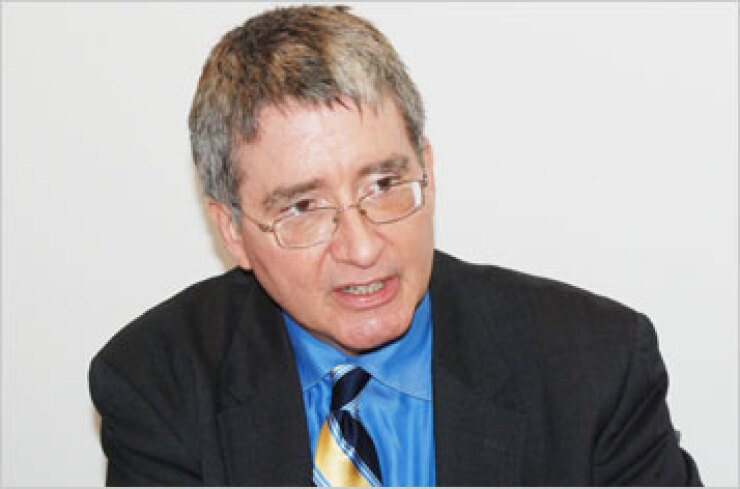
Municipal bond demand should increase in 2014 in an environment of expected higher interest rates, improved economic growth, lower issuance and richer valuations to Treasuries.
Tax-exempt investors have arrived at what could well represent a "new equilibrium" for interest rate levels, Chris Mier, a managing director in analytical services at Loop Capital Markets, told clients Thursday afternoon during the firm's sixth annual outlook conference call. Accordingly, most of investors' work has already been done in their adjustments to current levels, he said.
"You're going to want to make some adjustments on the curve," Mier said. "There will be some new opportunities this year. But you may not be as far away from where you want to be as you think. We feel the new equilibrium range is dominant probably in our marketplace."
Loop predicted growth of 3.25% in gross domestic product for 2014, a slightly higher estimate than the Federal Reserve's forecast range of 2.8% to 3.2%. That growth in nominal GDP should push interest rates higher, which should bring tax-exempt yields back to comfortable levels the market last saw around 2003 and 2006, he said.
"That will take the chill off retail demand in muni market," Mier said.
The one-to-30-year muni yield curve slope, at 376 basis points, per Municipal Market Data numbers through Thursday, will get steeper in 2014, but only to a point. And more investors will buy debt with longer maturities if and when it does, Mier said.
In fact, Loop expects steepening in the first half of 2014 and flattening in the second half.
The steepness of the slope at different parts of the curve means that investors moving down the curve, say from 14 years to 10 years for shorter duration strategies, could give up significant income.
In addition, muni ratios to Treasuries, with the 10-year at 92% through Thursday, should fall into much richer territory — as much as 10 percentage points from current levels.
With higher interest rates, muni spread compression may ease, Mier said. "Credit conditions are positive for states and slightly negative to neutral for local units," he said.
Loop also expects muni bond mutual fund
Finally, most metrics for the tax-exempt market are moving in a favorable direction, Mier said. Muni ratios to corporate bonds show how cheap munis have become, which stands as a positive sign. Muni yields have also cheapened dramatically against dividend-paying stocks, which is good for muni investors, including dividend investors who need cash flow.
And tax-exempt yields should outpace inflation, Mier said.
"Since we expect muni yields to rise faster than inflation," he said, "muni attractiveness relative to inflation should increase as the year progresses."
That means investors need to be wary of shortening too much and sacrificing coupon and roll-down. They should also be aware of growing spread differences in price between desirable and less-desirable muni credits, Mier said, due to increasing demand and shrinking supply.





